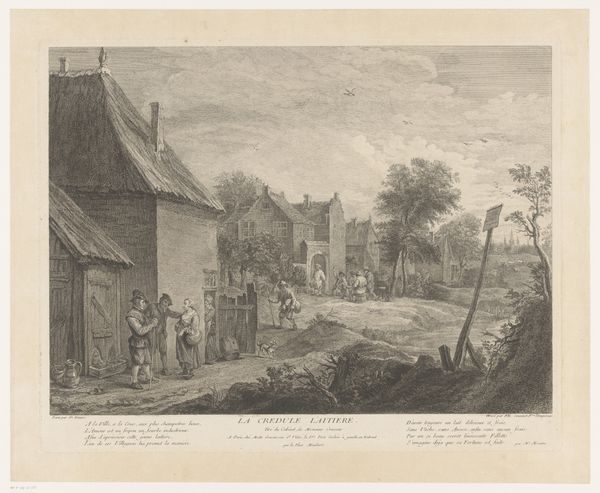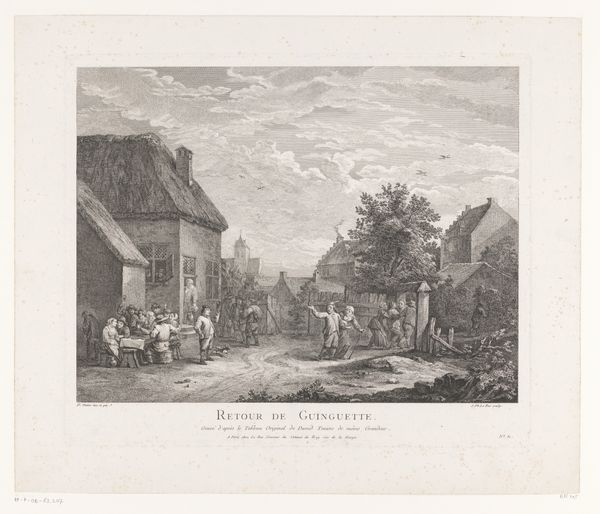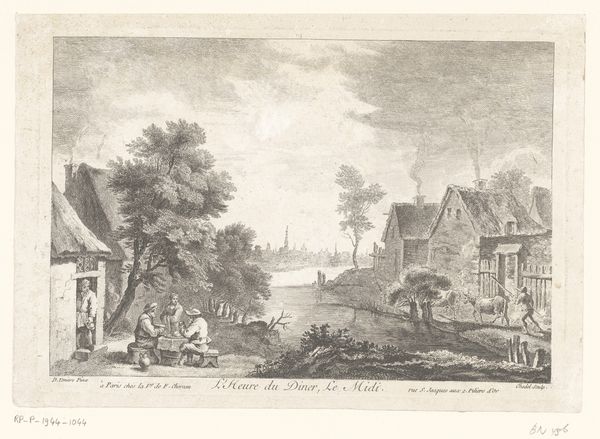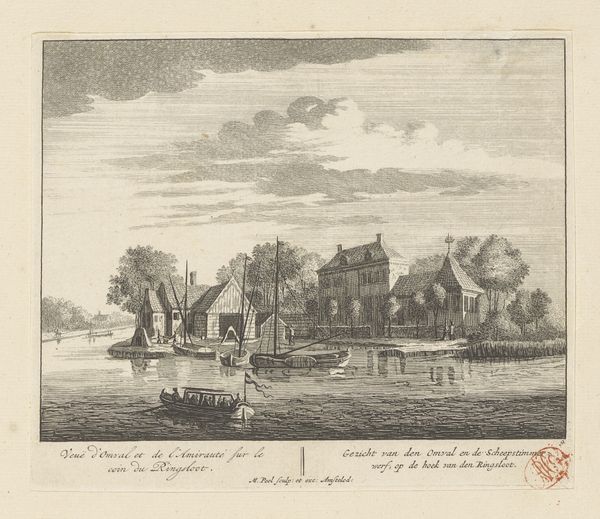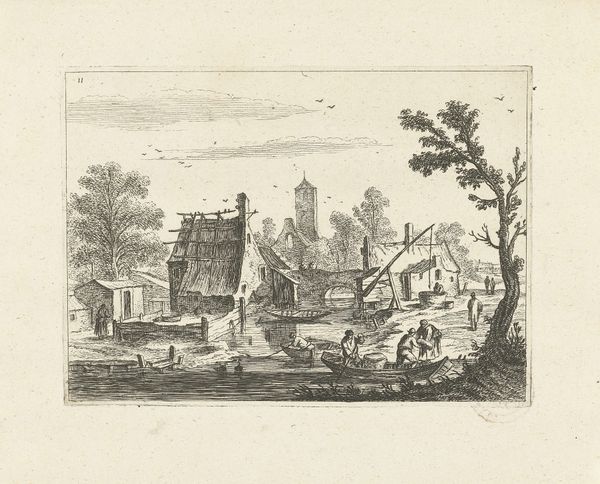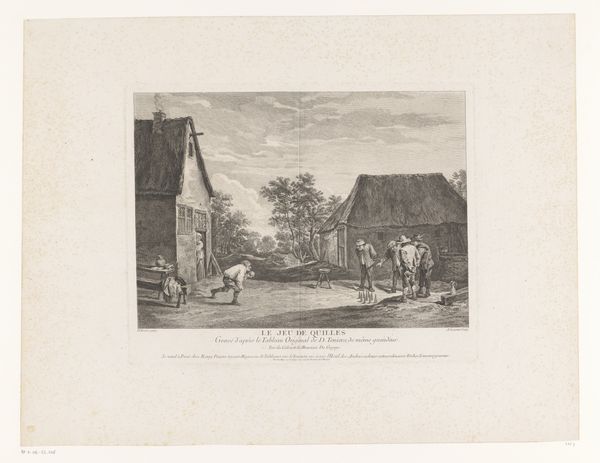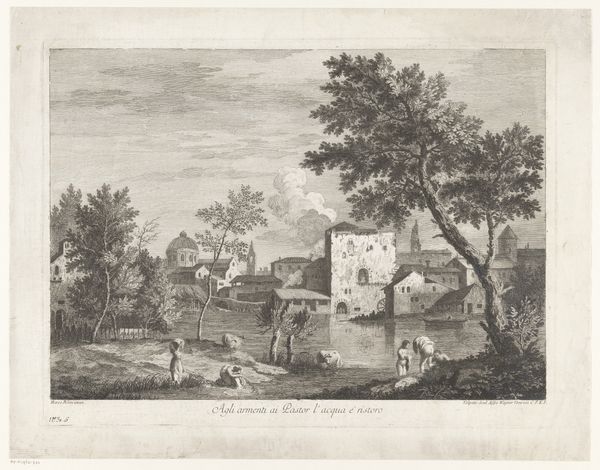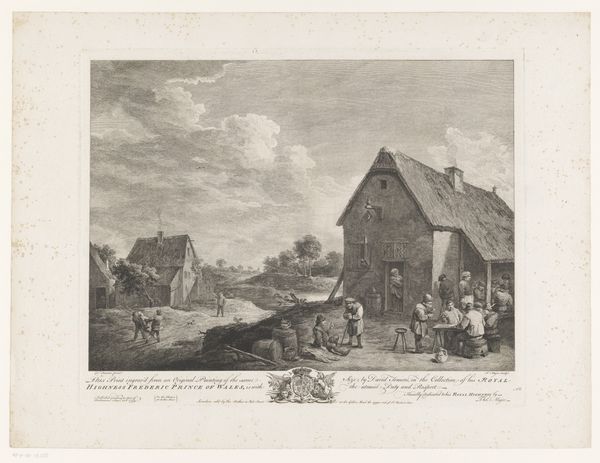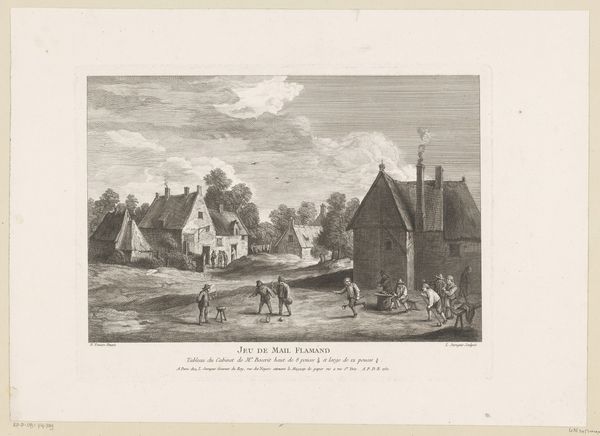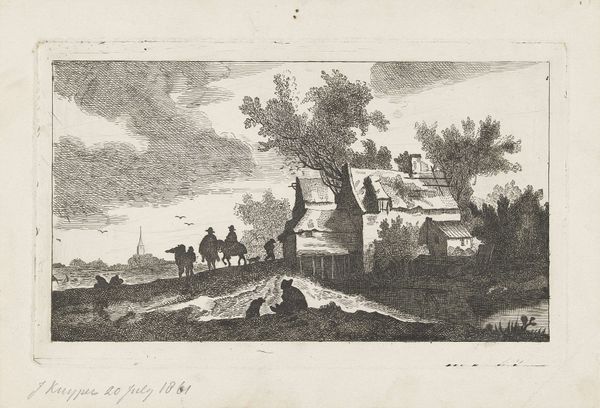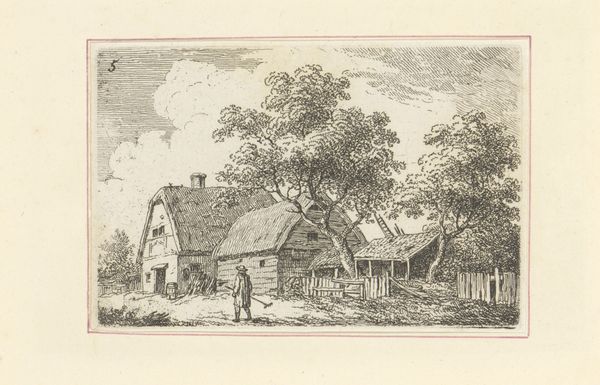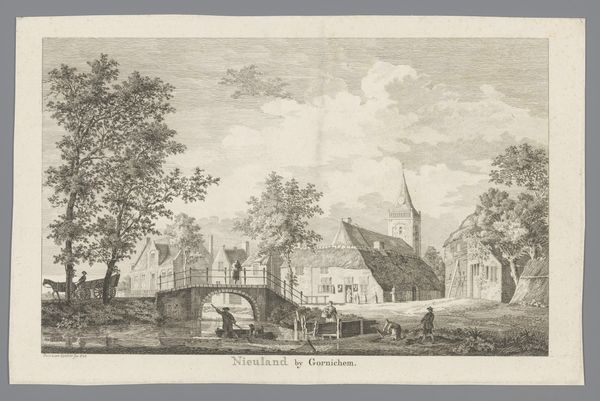
drawing, print, engraving
#
drawing
#
baroque
# print
#
old engraving style
#
landscape
#
line
#
cityscape
#
genre-painting
#
engraving
#
realism
Dimensions: height 196 mm, width 233 mm
Copyright: Rijks Museum: Open Domain
Curator: This engaging image before us, titled "Vlaams dorpsgezicht met boeren die een kaartspel spelen," translates to "Flemish Village Scene with Peasants Playing Cards." It’s an engraving created by Louis Surugue in 1746, now residing at the Rijksmuseum. Editor: My first impression? It's like stepping into a Bruegel painting, but rendered with such delicate lines. A quiet humanness emanates from the gathering of figures that promises camaraderie but hints at darker secrets. Is it just me, or do these figures hide darker things beneath their everyday rituals? Curator: You’ve touched on something fascinating. Genre paintings like this weren't just about depicting everyday life. They often held coded moral messages. The act of gambling, particularly in a public space like this, carried connotations of idleness, recklessness and even sin, and as this artwork adopts an old engraving style we must remember what values its audiences would have prized. It reflects ideas of what Baroque societies believed life was, and what it should be. Editor: Right! The whole village serves almost like a backdrop for the scene. See how it looms. Even in the midst of the smoke rising lazily, the church’s steeple suggests some connection to judgement. I almost wonder if the characters are in purgatory. And is that someone peeking through the door behind? Curator: Intriguing observation. That figure watching might indeed symbolize a kind of surveillance or even divine judgment of behavior that is being conducted within view of all. The artist uses light and shadow so well here. But that would suggest Surugue wasn't simply copying what was depicted in life. Instead, by embedding so many ideas into the artwork, Surugue would suggest an entire system of looking for audiences to unravel. Editor: Precisely! He’s giving us an active puzzle! The way he draws with lines almost makes the landscape resemble some theatrical set design. The eye is drawn in but the details are carefully curated to pull out questions that are buried underneath common themes of work, community, and life. Curator: Absolutely, and I think considering this within its historical and symbolic context deepens our appreciation of the work and of its lasting value. It gives a brief, detailed, yet complicated image that brings out our cultural memory of how societies function over time. Editor: For me, looking at it closely made me wonder if this piece offers us the choice to reflect upon ourselves. In viewing others' rituals or activities, can we unravel something about our expectations, anxieties, and beliefs as well? What is gambling but not our own lives?
Comments
No comments
Be the first to comment and join the conversation on the ultimate creative platform.
